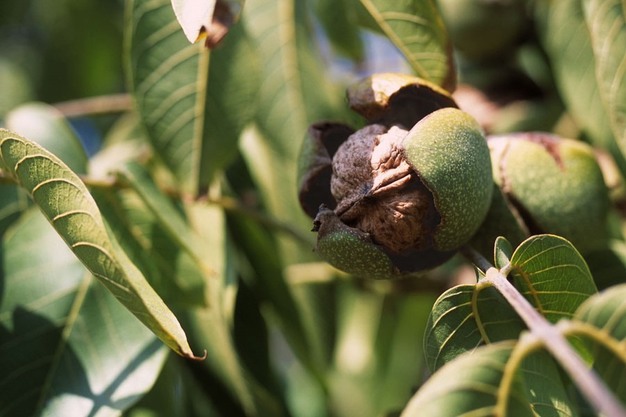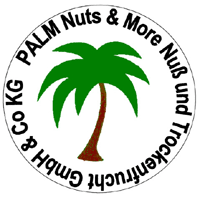This year's walnut harvest in the walnut stronghold of California is now coming to an end. However, there is great uncertainty regarding the actual harvest volume, as Jens Borchert from the specialized import partner PALM Nuts & More Nuss und Trockenfrucht GmbH & Co.KG tells. "The original estimate was around 670,000 tons, but now figures below 600,000 and even 550,000 tons are also circulating. That would be 10 percent less than the official USDA estimate at the beginning of September and 27 percent less than in 2023. However, these are still unconfirmed forecasts. According to exporters, some qualities this year are said to be worse than last year."
There are several reasons for this predicted decline in harvest, Borchert continues. "First of all, the trees need a certain period of rest during the winter, but it wasn't cold enough this year. In addition, flowering took place very late this year. Another factor is the low price level of the past season, which has led many growers to reduce their use of fertilizers and irrigation. Furthermore, many older plants are now no longer being cultivated or have been removed, which has also had a negative impact on productivity. In the north, the most important growing area in California, yields are still expected to be reasonably good, but in the south, large losses are to be expected. The desired calibers (30 mm+) for cracking are also expected to be limited this year." The last old crop goods were marketed at the beginning of November, with the first arrivals of new crop goods not expected until January.

According to Borchert, there are hardly any alternatives to the Californian product. "In France, serious losses of up to 30 percent in the Grenoble area and sometimes total losses in the Perigord region are predicted. New walnuts of Chilean origin are normally traded between April and June so that this quantity can cover the beginning of the European Christmas business. But here, too, the supply was apparently sold out relatively early this year. Eastern Europe and Italy have suffered greatly from the heat and drought. The same applies to Spain, where there was heavy rainfall at harvest time. In Portugal, conditions were good throughout the entire growth phase, but there was heavy rain at the start of the harvest and only a small amount of produce is coming onto the market from there. According to current information, China is expected to have abundant yields, which are often exported to Turkey and possibly also to Europe. However, it should be noted that China still has an image problem in the markets here."
Increasing competition characterizes the global walnut market
The Chandler variety (walnut kernels) is still far ahead in California's walnut production, with an estimated market share of around 50 percent, followed by the Howard variety, which is mainly marketed as inshell nuts. The older Hartley variety, on the other hand, has almost disappeared over the years. Borchert: "In terms of quantity, the 23/24 season was a very abundant year, especially for walnut kernels. This has led to relatively favorable prices and corresponding promotions not only in Germany but in many European countries. In the last phase of the marketing season in particular, competition has increased with countries of origin such as Chile, Australia and Hungary, which are entering the market with increasing cultivation volumes. This in turn means that the food retail industry has several options during this period, although this year there are problems and losses in almost every single growing country."
In the short term, overseas walnuts tend to lose importance, while European production is gradually expanding, Borchert sums up. "There are also more and more producers in Germany who want to dedicate themselves to walnut growing. From a global perspective, I see little potential for growth in Chile, as the walnut has lost its appeal to hazelnuts and fruit growing. In California, I see a similar trend, with annual crops such as tomatoes and the like gaining in importance because they do not require large up-front investments. However, we have also had overproduction in this regard, and this is now being corrected to a certain extent. Last year's market prices were anything but sustainable or cost-covering, while there will be attractive producer prices in the upcoming season. The key question now is to what extent these higher prices will be a limiting factor for sales."

Jens Borchert enquired about the latest market trends in the industry at this year's DOGK in Düsseldorf.
Photo credit: Mariani of California
For more information:
Jens Borchert
PALM Nuts & More Nuss und Trockenfrucht GmbH & Co.KG
Lindenstrasse 17
D-21244 Buchholz/Nordheide
Phone: +49 4181 9091 0
e-mail: [email protected]
Website: https://www.palm-nutsandmore.de
